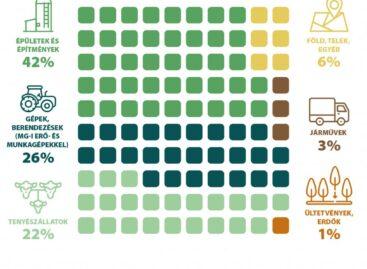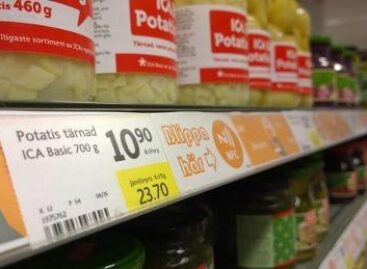Food prices may continue to rise due to price adjustments following inflation
This spring, a number of companies were confronted for the first time with the phenomenon of inflation-tracking price adjustments, which, although they existed before, have now become really perceptible and decisive – writes the G7. In particular, telecommunications service providers came into focus when they generally increased their fees by 15 percent in 2024, referring to the 17.6 percent (annual average) price increase of the previous year measured by the KSH. However, the question arises whether if all companies followed this practice, it would not lead to the same level of price jump as in the last two years.
It seems logical for a company to track inflation, but it raises a number of questions. Didn’t the service providers plan for the year 2023 in such a way that they took into account the expected economic processes? Did everyone miscalculate, or was the level of the increase in price unforeseen, and now an additional correction will take place? If all companies consistently implement a 15 percent increase, doesn’t that jeopardize the 4-5 percent inflation expectation this year?
In 2024, this topic became particularly relevant, as the annual inflation rate was exceptionally high compared to previous years. It is therefore worthwhile to examine and explain the phenomenon from two different perspectives. In a typical competitive market approach, for example, employers often raise workers’ wages at the beginning of the year in order to prevent them from losing purchasing power. In this case, the employees bear the inflation risk during the year, but the employer corrects this at the beginning of the following year.
On the other hand, expenditures related to the state budget, such as pension increases, are usually determined in terms of the expected inflation, not the last year’s inflation. If it turns out at the end of the year that this was insufficient, a subsequent correction is made. The fundamental difference between the two approaches is that one is regulated by market conditions and the other by legislation.
Related news
42 percent of agricultural investments were spent on buildings and structures in 2024
According to preliminary data from the Central Statistical Office, the…
Read more >Greek Supermarkets Beat European Rivals On Price
Greek supermarkets offer a more affordable average household basket, compared…
Read more >Low sour cherry harvest expected across Europe this year
Experts are predicting significant crop losses in sour cherry producing…
Read more >Related news
WHO: They urge a 50 percent price increase for tobacco, alcohol and sugary drinks
The World Health Organization (WHO) is calling for the prices…
Read more >Eurozone economic growth accelerated in June
The eurozone’s economic performance accelerated in June, according to the…
Read more >This is how drug prices are changing: the government introduced price restrictions
The Ministry of National Economy’s price restrictions on medicines came…
Read more >






